Trimethoxypropylsilane
Synonym(s):Propyltrimethoxysilane
- CAS NO.:1067-25-0
- Empirical Formula: C6H16O3Si
- Molecular Weight: 164.27
- MDL number: MFCD00043026
- EINECS: 213-926-7
- SAFETY DATA SHEET (SDS)
- Update Date: 2025-09-25 17:15:13
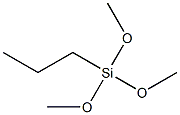
What is Trimethoxypropylsilane?
Chemical properties
Colorless or yellowish clearliquid
The Uses of Trimethoxypropylsilane
It finds its application as an important material in sol-gel production, provides a hydrophobic surface treatment for inorganic powders or filter materials and it is one of the catalyst component for polyolefin production with Ziegler-Natta catalyst.
Flammability and Explosibility
Flammable
Properties of Trimethoxypropylsilane
| Boiling point: | 142 °C(lit.) |
| Density | 0.932 g/mL at 25 °C(lit.) |
| vapor pressure | 0.15 psi ( 20 °C) |
| refractive index | n |
| Flash point: | 97 °F |
| form | clear liquid |
| color | Colorless to Almost colorless |
| Specific Gravity | 0.932 |
| Water Solubility | Reacts with water. |
| Sensitive | Moisture Sensitive |
| Hydrolytic Sensitivity | 7: reacts slowly with moisture/water |
| BRN | 2070458 |
| Stability: | Stable, but reacts with moisture. Flammable. Incompatible with strong oxidizing agents, acids, alcohols, bases, water. |
| CAS DataBase Reference | 1067-25-0(CAS DataBase Reference) |
| NIST Chemistry Reference | Silane, trimethoxypropyl-(1067-25-0) |
| EPA Substance Registry System | Trimethoxypropylsilane (1067-25-0) |
Safety information for Trimethoxypropylsilane
| Signal word | Warning |
| Pictogram(s) |
 Flame Flammables GHS02  Exclamation Mark Irritant GHS07 |
| GHS Hazard Statements |
H226:Flammable liquids H315:Skin corrosion/irritation H319:Serious eye damage/eye irritation H335:Specific target organ toxicity, single exposure;Respiratory tract irritation |
| Precautionary Statement Codes |
P210:Keep away from heat/sparks/open flames/hot surfaces. — No smoking. P233:Keep container tightly closed. P240:Ground/bond container and receiving equipment. P261:Avoid breathing dust/fume/gas/mist/vapours/spray. P264:Wash hands thoroughly after handling. P264:Wash skin thouroughly after handling. P280:Wear protective gloves/protective clothing/eye protection/face protection. P303+P361+P353:IF ON SKIN (or hair): Remove/Take off Immediately all contaminated clothing. Rinse SKIN with water/shower. P305+P351+P338:IF IN EYES: Rinse cautiously with water for several minutes. Remove contact lenses, if present and easy to do. Continuerinsing. P370+P378:In case of fire: Use … for extinction. P405:Store locked up. P403+P235:Store in a well-ventilated place. Keep cool. P501:Dispose of contents/container to..… |
Computed Descriptors for Trimethoxypropylsilane
| InChIKey | HQYALQRYBUJWDH-UHFFFAOYSA-N |
New Products
Indole Methyl Resin tert-butyl 9-methoxy-3-azaspiro[5.5]undecane-3-carboxylate Boc-His(Boc)-OH 2-CTC Resin 4-Chloro-7-tosy1-7Hpyrrolo[2,3-d]pyrimidine 5,7-Dibromo-1H-indole 2,5-dichloro-N-hydroxy-4,6-dimethylpyridine-3-carboximidamide 2,2-Dimethoxy-7-azaspiro[3.5]nonane hydrochloride 4-chloromethyl-5-methyl-1,3-dioxol-2-one (DMDO-Cl) R-2-BENZYLOXY PROPIONIC ACID 1,1’-CARBONYLDIIMIDAZOLE 1,1’-CARBONYLDI (1,2-4 TRIAZOLE) N-METHYL INDAZOLE-3-CARBOXYLIC ACID 4-((2-hydroxyethyl)thio)benzoic acid 1-(TERT-BUTOXYCARBONYL)-2-PYRROLIDINONE Methyl 6-methylnicotinate 3-Pyridineacrylic acid tert-Butyl carbazate TETRAHYDRO-2H-PYRAN-3-OL 2-((4-morpholinophenylamino) (methylthio) methylene) malononitrile 3-(4-morpholinophenylamino)-5-amino-1H-pyrazole-4-carbonitrile 2,4-dihydroxybenzaldehyde 1,3-Diethyl-1,3-Diphenylurea Methyl 2-methylquinoline-6-carboxylateRelated products of tetrahydrofuran
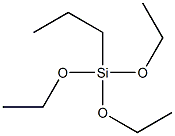

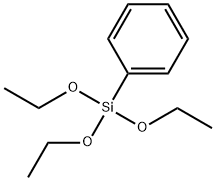
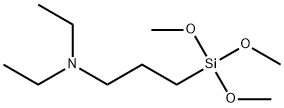
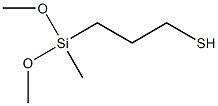



You may like
-
 n-Propyltrimethoxysilane CAS 1067-25-0View Details
n-Propyltrimethoxysilane CAS 1067-25-0View Details
1067-25-0 -
 Trimethoxy(propyl)silane, 97% CAS 1067-25-0View Details
Trimethoxy(propyl)silane, 97% CAS 1067-25-0View Details
1067-25-0 -
 Trimethoxy(propyl)silane CAS 1067-25-0View Details
Trimethoxy(propyl)silane CAS 1067-25-0View Details
1067-25-0 -
 Pyridine 99.5% HPLC /UV SpectroscopyView Details
Pyridine 99.5% HPLC /UV SpectroscopyView Details
110-86-1 -
 Piperazine Spot supply, best priceView Details
Piperazine Spot supply, best priceView Details
110-85-0 -
 Dibutyl PhthalateView Details
Dibutyl PhthalateView Details
84-74-2 -
 Imidazole Spot supply, competitive priceView Details
Imidazole Spot supply, competitive priceView Details
288-32-4 -
 Thiourea 99% ARView Details
Thiourea 99% ARView Details
62-56-6
Statement: All products displayed on this website are only used for non medical purposes such as industrial applications or scientific research, and cannot be used for clinical diagnosis or treatment of humans or animals. They are not medicinal or edible.
